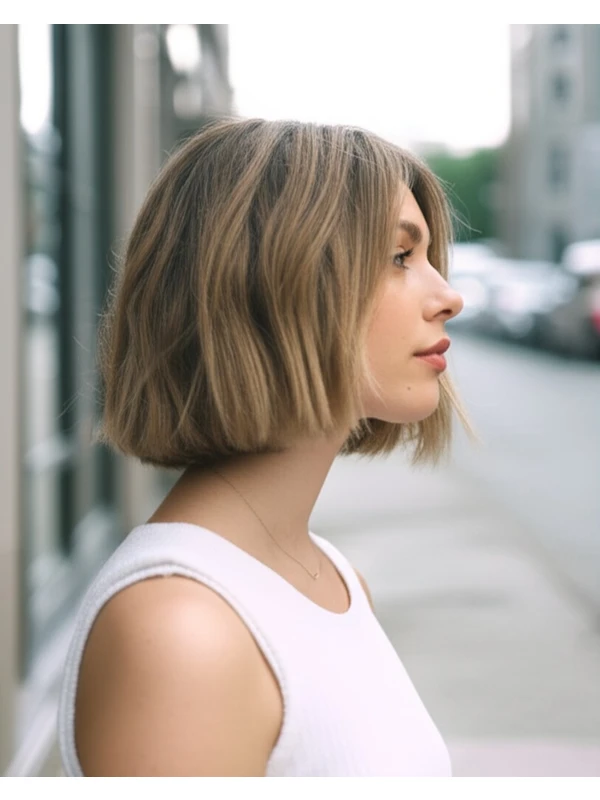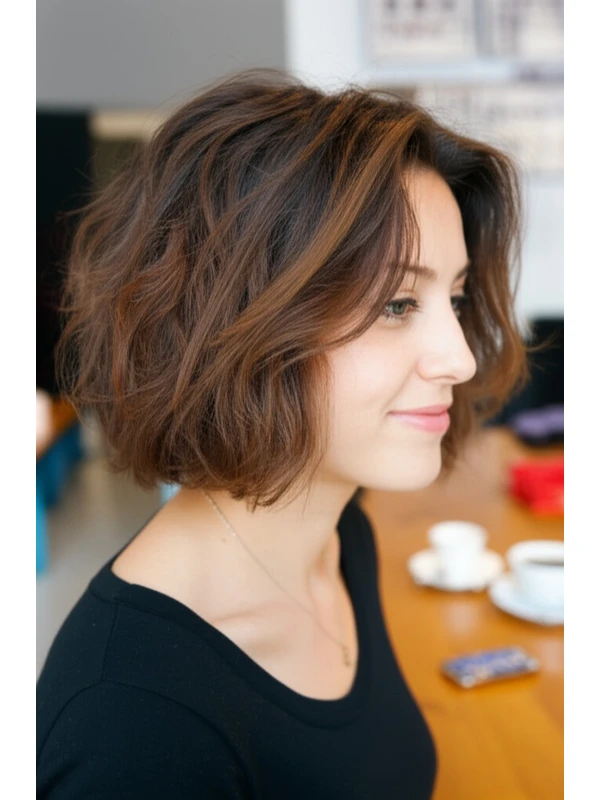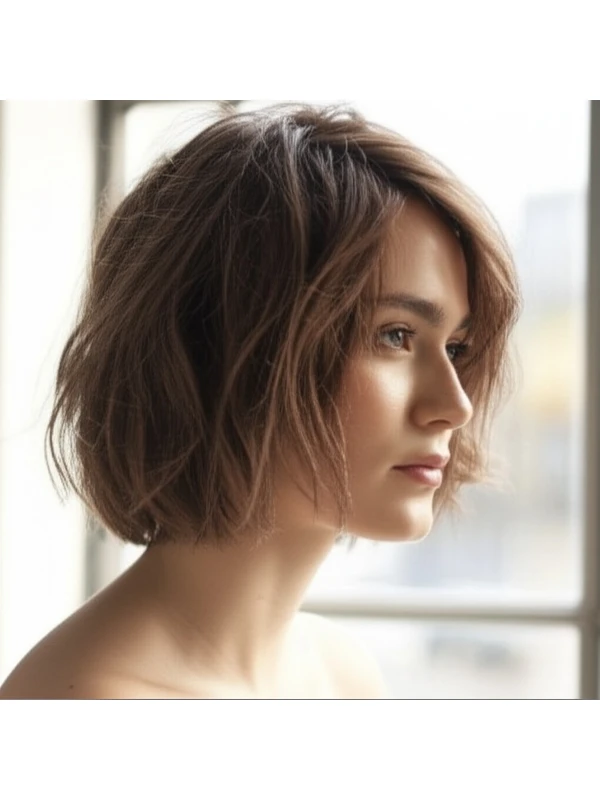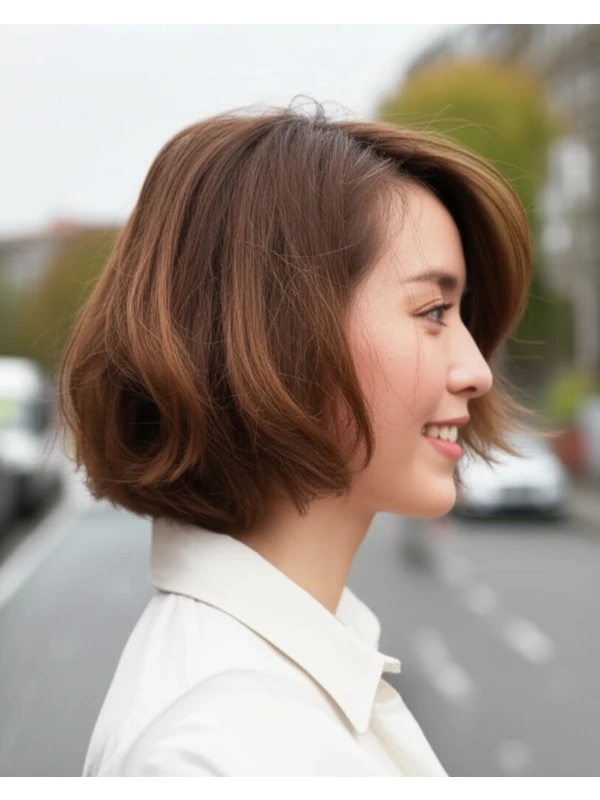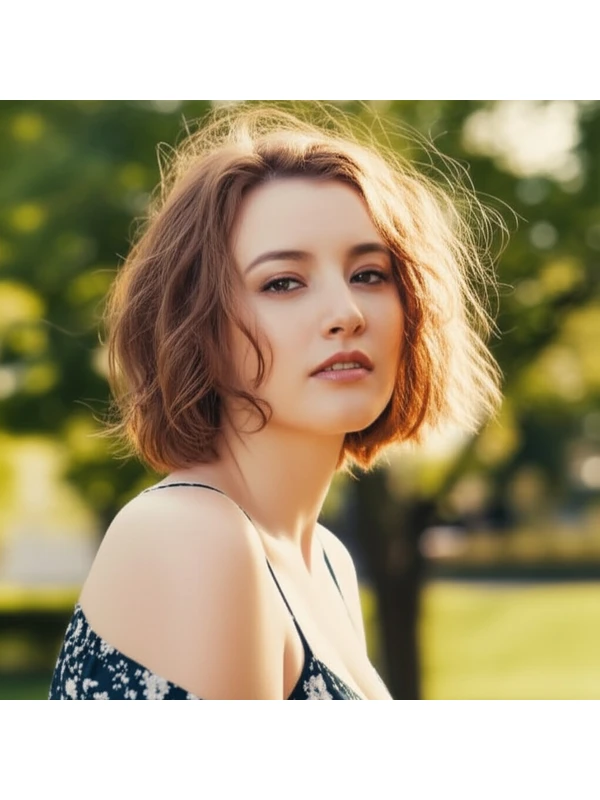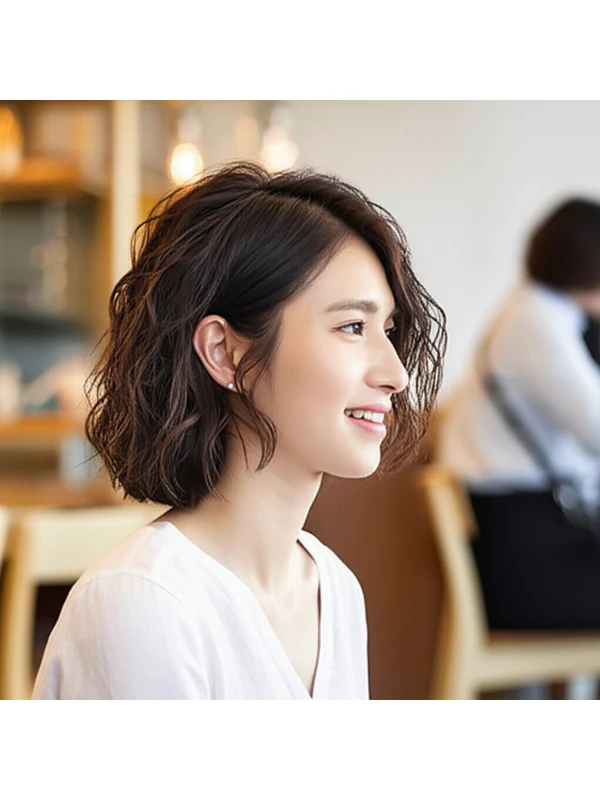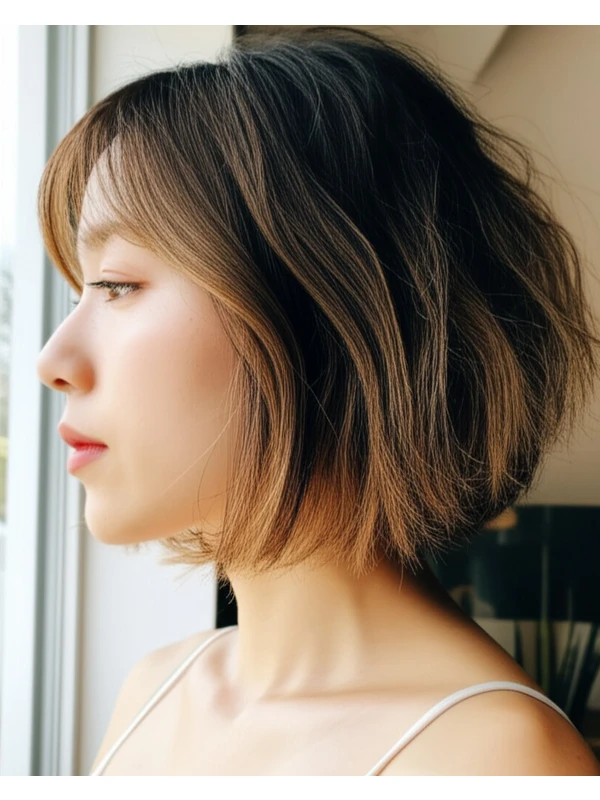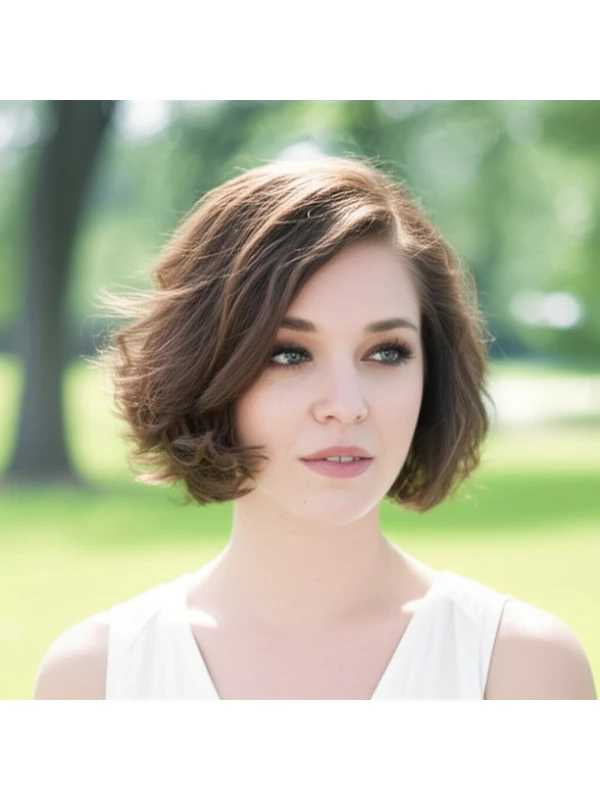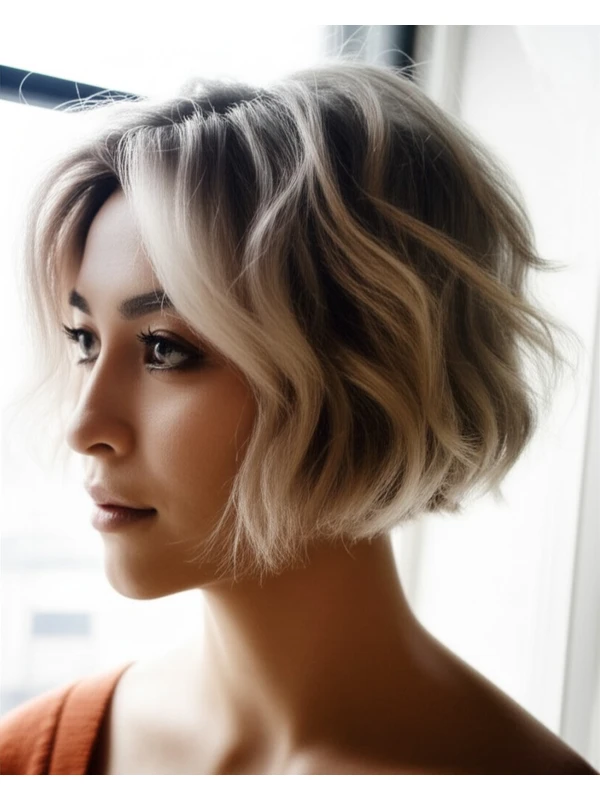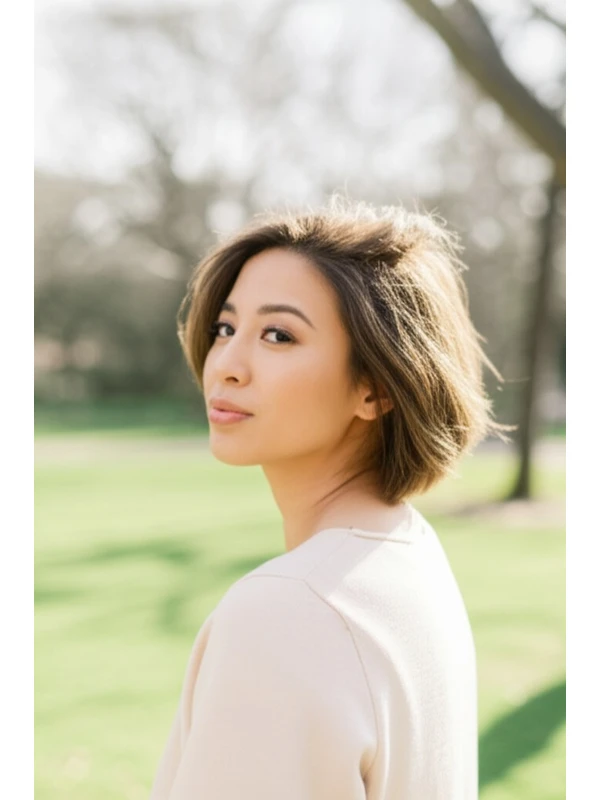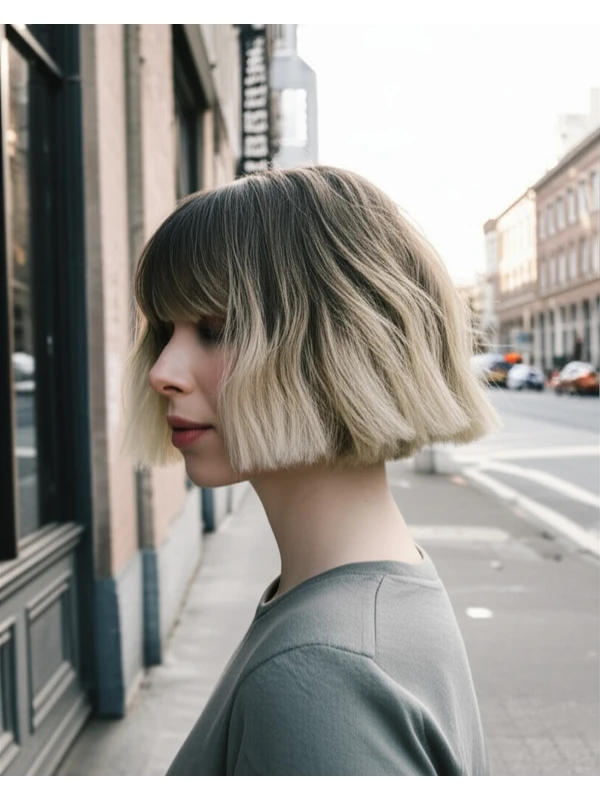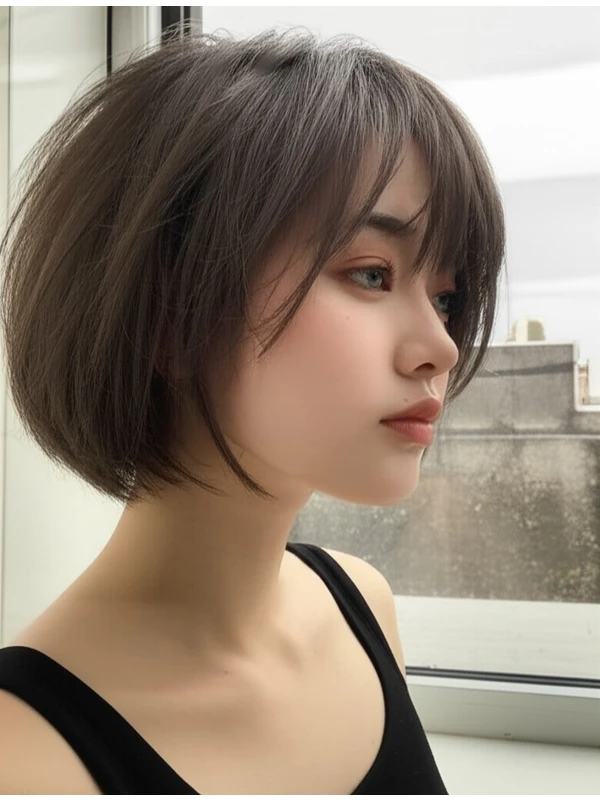#The Collarbone Bob: A Style Guide for Every You
The collarbone bob is having a moment – and for good reason! It's chic, versatile, and surprisingly flattering on many face shapes and hair types. But what exactly is it? This guide will break down everything you need to know about the collarbone bob, from its origins to how to style and maintain this effortlessly cool look.
#1. Background & Definition: What is a Collarbone Bob?
The collarbone bob (also called a “lob” – long bob) sits right at or just below your collarbone. It’s longer than a traditional short bob, offering more styling options while still feeling modern and manageable. Think of it as the perfect in-between length for those who aren't ready to go super short but want something beyond their shoulder-length hair.
Key Features:
- Length: Typically falls between 10–14 inches (25–36 cm) from the crown of your head, hitting around or just below the collarbone.
- Shape: Can be blunt and precise, softly layered for movement, or angled to flatter your face shape.
- Versatility: Works well with various hair textures – straight, wavy, curly, and coily – though adjustments are needed (see section 4).
Alternative Names:
- Lob (Long Bob) - the most common alternative.
- Collarbone Cut
- Mid-Length Bob
#2. Face Shape Fit: Finding Your Ideal Collarbone Bob
The beauty of the collarbone bob is its adaptability, but understanding how it interacts with your face shape is key to a flattering result.
- Oval: Lucky you! Almost any collarbone bob style will work beautifully. Experiment with blunt cuts, layers, and fringe.
- Round: A slightly angled bob (longer in the front) helps elongate the face. Avoid blunt cuts that can emphasize roundness. Side-swept bangs soften features.
- Square: Soft layering is your friend! It softens angular jawlines. A middle part balances a square face, while a side part adds asymmetry and visual interest. Avoid sharp, blunt edges.
- Heart: Chin length or slightly longer will balance the wider forehead. Layers around the cheekbones add volume where needed. Curtain bangs are particularly flattering.
- Diamond: A collarbone bob with layers that start at your chin can soften strong angles and highlight your eyes. Side-swept fringe adds softness.
- Oblong (Long): Adding width is key! Opt for a more voluminous style, perhaps with face-framing layers or even subtle curls/waves. A full fringe also helps shorten the appearance of a long face.
#3. Body Proportions & Height Guidance: Tailoring Your Bob to You
Beyond your face shape, your overall body proportions influence how a collarbone bob looks and feels.
- Petite (under 5’4”): A shorter collarbone bob (closer to 10 inches) prevents the hair from overwhelming your frame. Avoid excessive volume at the crown.
- Average Height (5’4”-5’9”): You can rock almost any length within the range! Consider shoulder width when deciding on layers and volume placement.
- Tall (over 5’9”): A longer collarbone bob (closer to 14 inches) creates a balanced silhouette. Layers add movement without making your hair feel too short.
- Narrow Shoulders: Layers that start at the shoulders can create the illusion of wider shoulders. Volume on top also helps balance proportions.
- Broad Shoulders: Avoid adding excessive volume around the shoulder area. Keep the layers more subtle and focus on creating height at the crown to draw attention upwards.
- Short Neck: A collarbone bob with a slight angle can help elongate your neck visually. Avoid chin-length bobs that might accentuate a shorter neck.
- Long Neck: You can pull off almost any length! Consider adding volume around the face to create balance.
#4. Works Best With Hair Types & Densities: Adapting for Your Texture
The collarbone bob is adaptable, but adjustments are necessary based on your hair type and density.
- Straight Hair: A blunt cut looks sleek and modern. Layers can add movement if desired.
- Wavy Hair: Embrace the waves! Soft layers enhance natural texture. Consider a slightly longer length to accommodate wave patterns.
- Curly/Coily Hair: This style requires careful consideration of shrinkage. What looks like a collarbone bob when dry might be much shorter when wet and coiled. Consult with a stylist experienced in cutting curly/coily hair for accurate length assessment. Layering is crucial to prevent a triangular shape as curls shrink.
- Fine Hair: Blunt cuts can make fine hair look thicker, but too much layering can create thinness.
- Medium Hair: Most styles work well! Experiment with layers and texture.
- Thick Hair: Thinning out the bulk with strategic layering is essential for a manageable collarbone bob.
Density Tips: Those with low density (thin hair) may benefit from techniques that create visual volume, like subtle texturizing or root teasing. High-density hair often needs more thinning and shaping to avoid looking heavy.
#5. Styling Variations: From Sleek to Textured
The collarbone bob is a blank canvas for your styling creativity!
- Sleek vs. Textured: A flat iron creates a sleek, polished look. Sea salt spray or texturizing cream adds effortless texture and movement.
- Middle vs. Side Part: Middle parts create symmetry; side parts add softness and asymmetry.
- Fringe Variations: Curtain bangs are universally flattering. Blunt bangs can be chic but require more maintenance. Side-swept bangs soften features.
- Occasion Styling: For casual days, air dry with a texturizing product. For the office, opt for a sleek and polished look. For evening events, add waves or curls using a curling iron or hot rollers.
#6. Maintenance: Keeping Your Bob Looking Fresh
Regular trims are essential to maintain your collarbone bob’s shape.
- Trim Cadence: Every 6-8 weeks is standard for most hair types. Curly/coily hair might need more frequent trims (every 4-6 weeks) due to shrinkage and growth patterns.
- At-Home Routine: Wash and condition 2-3 times a week, depending on your scalp's needs.
- Heat vs. Air Dry: Minimize heat styling whenever possible. Air drying is healthier for your hair.
- Product Checklist:
- Shampoo & Conditioner (suited to your hair type)
- Leave-in conditioner (especially important for dry or curly/coily hair)
- Heat protectant (if using heat styling tools)
- Styling product (mousse, cream, serum – depending on desired texture)
- Finishing spray (for hold and shine)
- Estimated Daily Styling Time: 15-30 minutes for a simple style; longer if you’re creating curls or waves.
#7. Grow-Out Roadmap: Evolving Your Style
The collarbone bob isn't static! As it grows out, it transforms.
- Months 1-3: The shape remains fairly consistent but might require minor trims to maintain its form.
- Months 4-6: You’ll start to see more length and potential for layering adjustments. Consider adding face-framing layers or softening the edges.
- Maintaining Shape: Regular trims are crucial during this phase. Communicate with your stylist about your desired grow-out direction (longer, layered, etc.).
#8. Color Pairings: Enhancing Your Collarbone Bob
Color can dramatically elevate a collarbone bob!
- Cool Undertones: Ashy blondes, cool browns, and even icy grays complement cooler skin tones.
- Warm Undertones: Honey blondes, caramel highlights, and warm reds enhance warmer skin tones.
- Low-Commitment Options: Balayage or babylights add dimension without a harsh root line, making it easier to transition when you want a change.
#9. Season & Occasion Guide: Styling for Every Moment
Adapt your collarbone bob’s style based on the season and occasion.
- Spring/Summer: Embrace lighter textures – beach waves or loose curls.
- Fall/Winter: Opt for more polished looks with sleekness or deeper, richer tones in your color.
- Work: A neat, professional look is key. Consider a sleek style with minimal texture.
- Weddings/Parties: Elevate the style with curls, waves, or an updo that showcases the length and shape of the bob.
- Formal Events: A sophisticated chignon or elegant updo can transform your collarbone bob into a formal masterpiece.
#10. Cost & Time: What to Expect at the Salon
The cost and time commitment for a collarbone bob vary depending on salon location, stylist experience, and hair complexity.
- Salon Time: Expect approximately 1.5–2.5 hours for the initial cut and style.
- Price Range: The service will likely fall in the “moderate” to "higher" price range compared to shorter cuts but less than longer styles requiring extensive processing or layering.
#11. Pros & Cons: Weighing Your Options
Pros:
- Versatile styling options
- Flattering on many face shapes
- Manageable length
- Modern and chic look
Cons:
- Requires regular trims to maintain shape
- Can be time-consuming to style for certain looks (especially curly/coily hair)
- May require more product than shorter styles.
#12. Salon Consultation Script: Questions to Ask Your Stylist
Prepare for your appointment with these questions:
- "Based on my face shape and hair type, what variations of the collarbone bob would you recommend?"
- “How will this cut work with my natural texture/hair density?”
- “Can we discuss how to style it both casually and for more formal occasions?”
- “What products do you suggest I use at home to maintain the shape and health of my hair?”
- "Could you show me a few different styling techniques that would work with this cut?"
